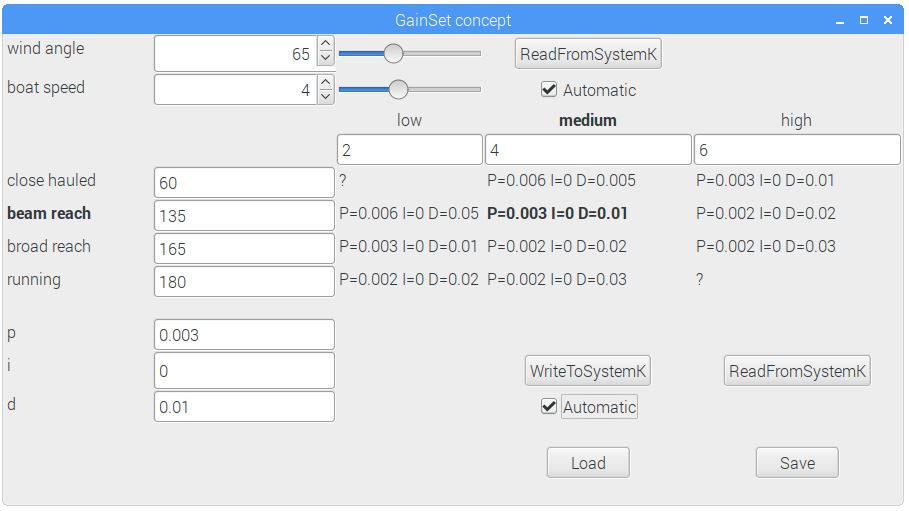(2019-07-09, 03:12 AM)seandepagnier Wrote: This would be a good alternate pilot to implement. Which parameters are you basing the changing gains on?
For now, it's nothing more than an idea, and the choice of parameters has been somewhat intuitive. The little video elaborates on this.
I would guess the first parameter, the point of sail, is a determining factor for the set of gains to use, as it determines where those (wind and water flow) force vectors apply to your boat.
But especially the water pressure along the rudder (roughly equivalent to the boat speed, the second parameter) seems to me very important in choosing those gains, because it determines the effectiveness of the rudder. The rudder reacts differently at 1 knot boat speed that it does at 5 knots.
I have actually been amused by the thought of making some pitot tube at the leading edge of the rudder, to be able to dynamically react to the effect of a following sea. When a wave lifts the stern, flow along the rudder drops, and you need, but for a brief moment, big tiller input (big P, big D?) to keep the boat straight. Quickly switching to a different gainset would do this. But this is very far down the line though.
More for now, the concept does allow another process (autogain.py) to optimise the current gainset and read the optimised parameters back. I don't understand the autogain.py code yet, but I guess it throws in some random changes in the parameters to assess their effect (like in simulated annealing).
In any event, this concept would facilitate boaters themselves to experiment with the settings without having to remember what setting was good for which circumstance.
Cheers,
![[Image: attachment.php?aid=477]](http://forum.openmarine.net/attachment.php?aid=477)






